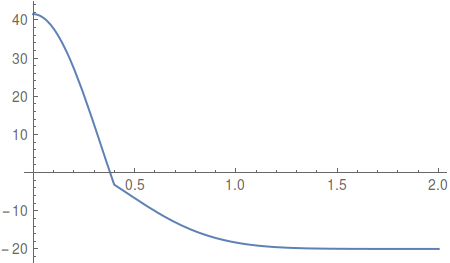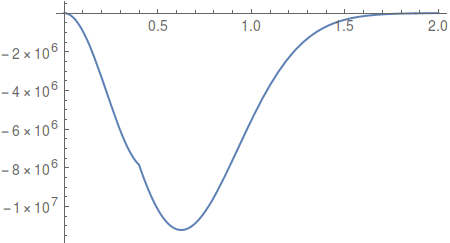Here is a way to do it:
T1 = 140;
T2 = -20;
k1 = 10^6*0.128*x;
rho1 = 800;
Cp1 = 1670;
k2 = 10^6*0.58*x;
rho2 = 1000;
Cp2 = 4200;
tend = 1/2;
lend = 2;
lm = 0.4;
v1 = rho1*Cp1;
v2 = rho2*Cp2;
opts = Method -> {"MethodOfLines",
"SpatialDiscretization" -> {"FiniteElement",
"MeshOptions" -> {"MaxCellMeasure" -> 0.01}}};
u0[x_] := Evaluate[With[{p = lm, T1 = T1, T2 = T2}, If[x < p, T1, T2]]]
(*Plot[u0[x],{x,0,lend}]*)
C1[x_] := Evaluate[With[{p = lm, k1 = k1, k2 = k2}, If[x < p, k1, k2]]]
M1[x_] := Evaluate[With[{p = lm, v1 = v1, v2 = v2}, If[x < p, v1, v2]]]
(* this depends a bit what you want *)
(*heateq1=M1[x]*D[u[x,t],t]\[Equal]1/x*Inactive[Div][{{C1[x]}}.\
Inactive[Grad][u[x,t],{x}],{x}]*)
heateq1 =
M1[x]*D[u[x, t], t] == 1/x*Div[{{C1[x]}}.Grad[u[x, t], {x}], {x}];
sol1 = NDSolveValue[{heateq1, u[x, 0] == u0[x]},
u, {x, 0, lend}, {t, 0, tend}, opts];
Plot[sol1[x, tend], {x, 0, lend}]
NIntegrate[sol1[x, tend], {x} \[Element] sol1["ElementMesh"]]
-17.231627750587393`
dsolm1 = C1[x]*D[sol1[x, t], x];
Plot[Evaluate[dsolm1 /. t -> tend], {x, 0, lend}]
Because there was some discussion in the comments I verified this result with another FEM tool and for the FEM I get the same results (up to some numerical acceptable difference) there. Note that the difference to the old answer is partially due to the use of the activated PDE - but that depends a bit on what you actually want to model.
Old Answer
I am not exactly sure what you are looking for, perhaps this:






